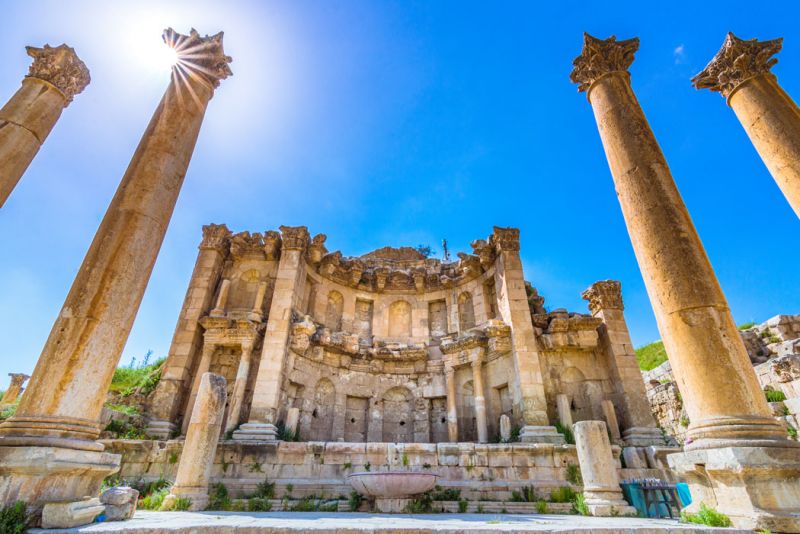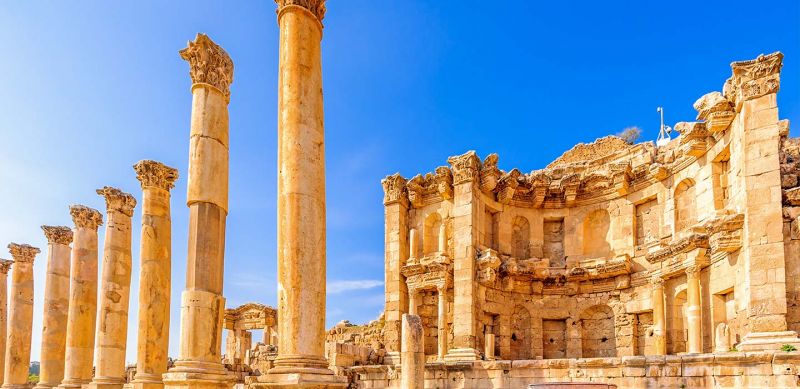Nymphaeum Temple of jerash
Nymphaeum of Jerash: This well-preserved example was originally embellished with marble facings on the lower level and painted plaster on the upper level, topped with a half-dome roof.
Name of the temple
The name of the temple is derived from nymphaeum or nymphaion which in ancient Greece and Rome, was a monument consecrated to the nymphs, especially those of springs.
Why was the temple built?
The Nymphaeum was a massive fountain devoted to the nymphs, who in Greek and Roman mythology were divine spirits associated with water and nature. Nymphaea were important architectural features in Roman cities, and they were frequently enormous constructions that fulfilled both functional and beautiful functions.
The Nymphaeum was built to collect water from natural springs or via an aqueduct system. Water was channeled through several pipes, and the fountains within the structure would have put on a spectacular show. The water passed on down from the main central niche into a wide pool or basin at the temple's foot.
Architecture of the Nymphaeum Temple
It is a two-story structure that was richly decorated, with marble slabs on the lower level, plaster above, and a half dome over. The Nymphaeum Temple of Jerash was built during Emperor Trajan's reign in the second century AD. The temple had a semi-circular exterior with figures in a central niche. Intricate sculptures, friezes, and Corinthian columns graced the structure. The friezes featured scenes from Roman mythology, including Tritons and Nereids.

Significance of the Temple
The Jerash Nymphaeum Temple was a symbol of the ancient city's prosperity and refinement. The presence of such a huge building emphasizes the necessity of water supply in the city, as well as the role of nymphs in Roman religion and culture. The Nymphaeum functioned as a social gathering place and a focal point for social events.

The Nymphaeum Temple Now
Like many other ruins in Jerash, the Nymphaeum Temple was buried beneath ages of detritus and sand. Excavations began in the early 20th century, and major restoration work has been completed to preserve and highlight the architectural splendor of the temple.
Even though water hasn't flowed for a long time, the well-preserved building remains one of Jerash's features. The fountain is still framed by several wonderfully sculpted Corinthian columns, and at its foot is a stunning pink-granite basin, which was probably erected by the Byzantines. The entire construction was once crowned with a semi-dome in the shape of a shell, and the intricate capitals lining the base of the ceiling may still be seen.
Visitors can now explore the site and marvel at the splendor of the Nymphaeum. Within the archaeological site of Jerash, the Nymphaeum Temple is a major tourist attraction. Visitors can walk around the temple, admiring the beautiful carvings and statues, and imagining the fountain's majesty in its prime. The site provides a look into the ancient Roman city's daily life and culture.
